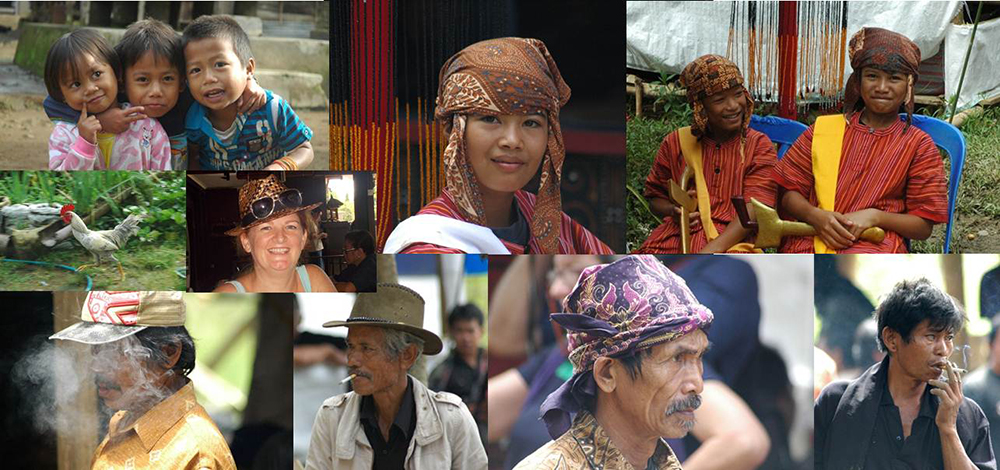
Two visitors arrived in mid-April; the first was my brother Toby and the second was my age old friend Stephanie. It was really great to see them both and catch up on the details of our recent lives. It was their first time to Jakarta so were visited Sunda Kelapa and while there we discovered the recently renovated VOC building. It is now open as a restaurant and also a venue for various community activities, we were given a short tour before seetling down to a well earned cold beer after the heat and dust of the harbour.
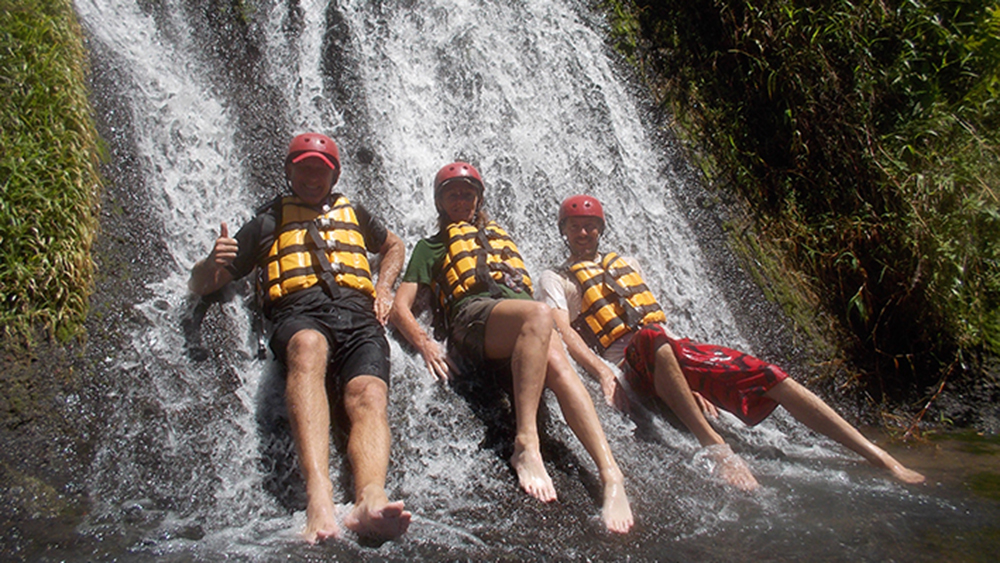
The next day we jumped on a plane to Makassar for a week of fun-filled activity in Sulawesi. As soon as we had landed and picked up our bags we were whisked away and onto a boat bound for Pulau Kappoposang, an island lying about 40nm off the coast. Luckily the boat had two 350hp outboards so in about one and a half hours we were stepping onto the golden sand.
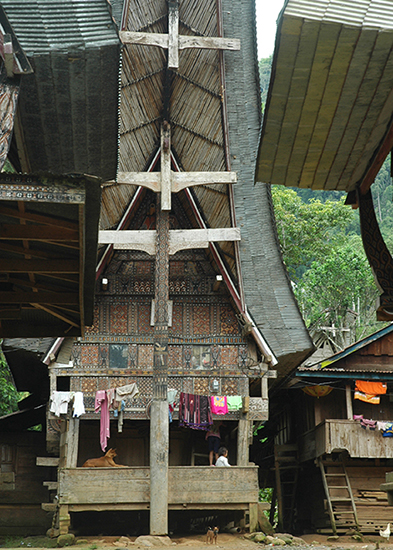
The island has a village in the centre but sees few tourists, the beach was pristine, the reef superb and the water wonderfully clear. Stephie and I had three dives, mostly wall dives and we saw turtles and white-tip reef sharks and were constantly surrounded by clouds of brightly coloured fish. The resort was little more than a losman but the food was fine and plentiful and they made a real effort to provide vegetarian food for Stephie. Fried bananas with cheese and chocolate sauce seemed to be a local favourite!
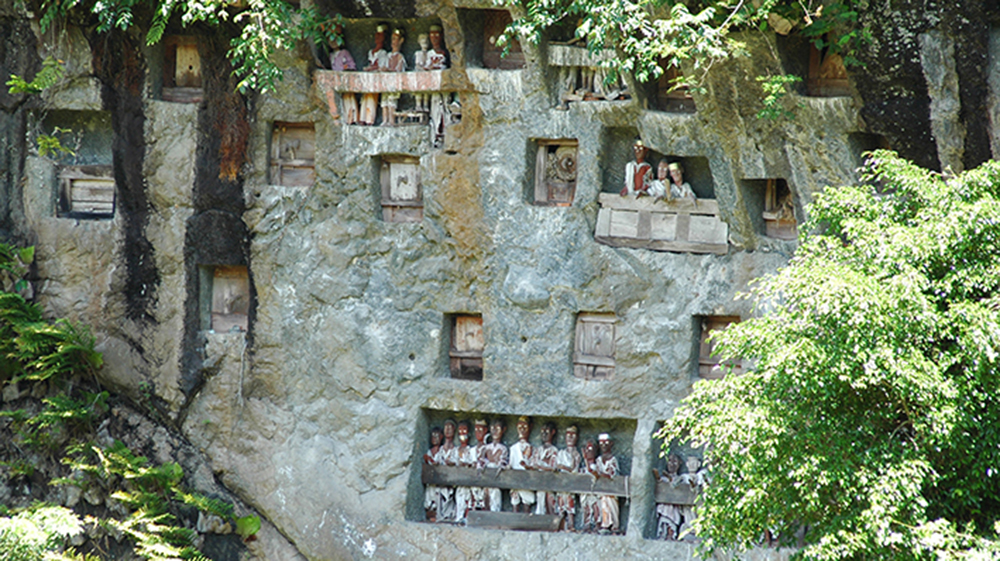
The following afternoon we returned to Makassar and the next day we met Daud, our guide for our trip to Toraja, and our excellent driver Leman. Tana Toraja lies in central Sulawesi and is well known for the unique culture of its people, particularly their houses, their funeral ceremonies and their burial sites. It takes 8-10 hours to drive there from Makassar but the road is not too bad, at least until you reach Toraja, then most of the mountain roads are in terrible condition. Hang in there – it’s worth it!
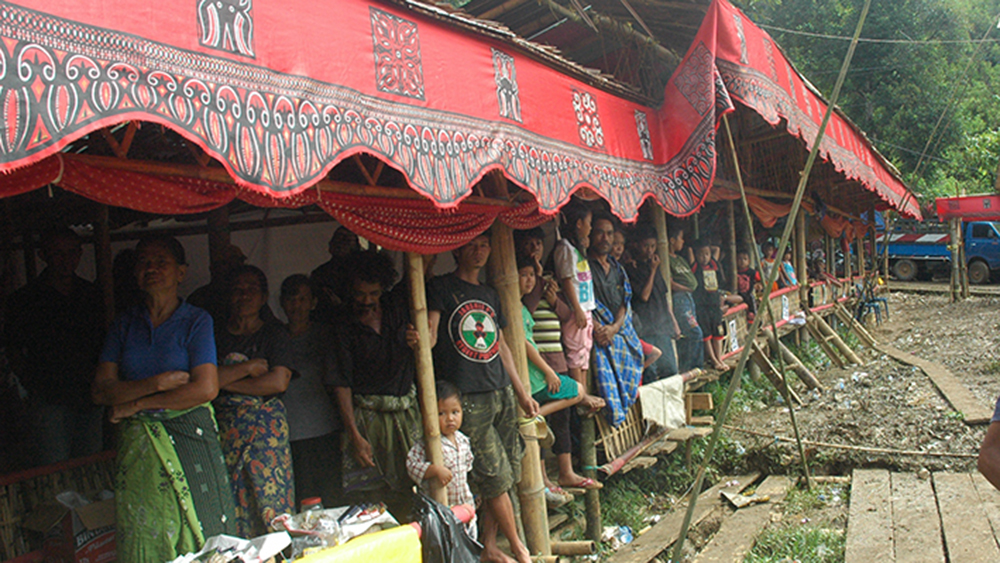
The funeral ceremony takes several days, involves the whole community and is a considerable expense for the family. The funeral will commonly take place weeks, months or even years after the death to allow the family to accumulate the funds required. In the meantime the deceased is kept in the tongkanan (house) with the family. The first day of the funeral is a procession and the second is a reception laid on by the family. On the third day of the funeral a large number of buffaloes and pigs are slaughtered, the number reflecting the wealth of the family.
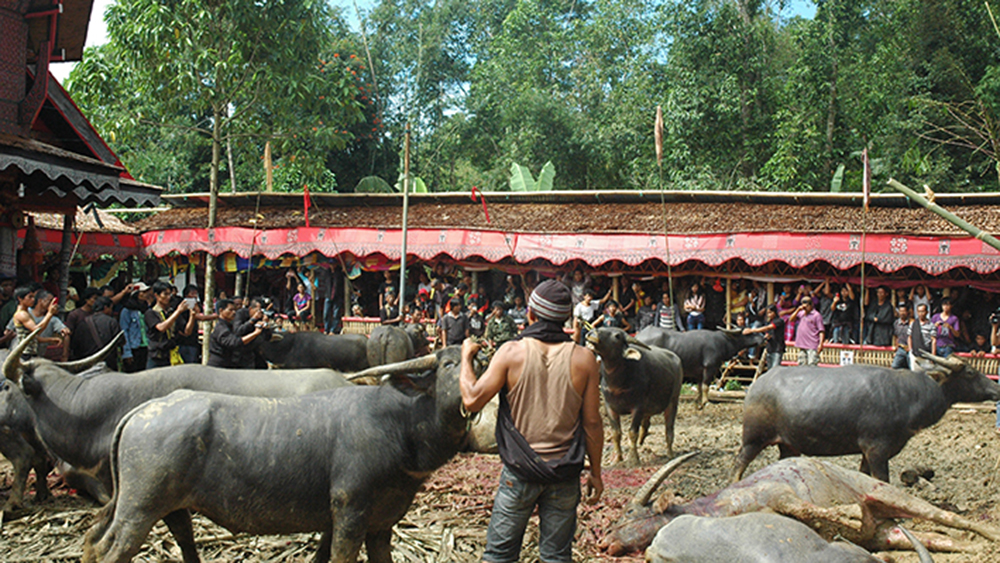
A huge feast is held and the left-over meat is distributed to all the people in the village. We had the opportunity to attend one of these ritualistic slaughters. It had an almost mediaeval festive atmosphere with brightly decorated stands for viewing and noisy cheers from the onlookers and the each buffalo was brought to the knife. For the western eye it was carnage, it was brutal and bloody and inhumane, something to be witnessed and experienced but definitely not for the faint-hearted.
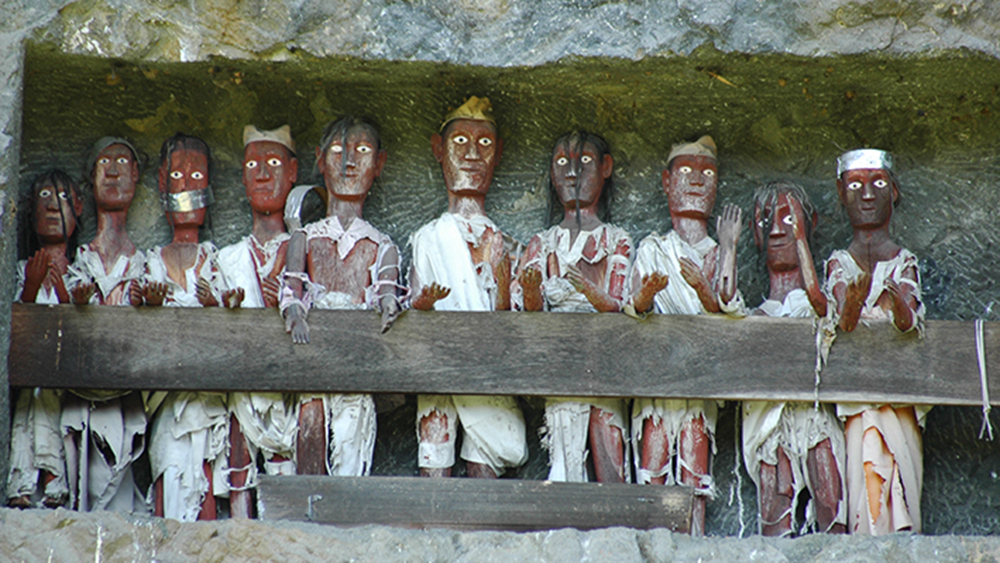
The fourth day is the burial and this is also unique to Torajan culture. The coffin is laid in a cave or a tomb carved into the face of a rock cliff. These tombs are expensive and can take months to carve although commonly the tomb will be used for several generations of the family. Carved wooden effigies of the deceased known as tau-tau are placed outside to guard the tomb and also protect the living. The body of an infant will not be buried in the rock grave but is buried in a grave carved out of a living tree. The rising sap and life in the tree is thought to nurture the infant rather than placing them in cold hard rock.
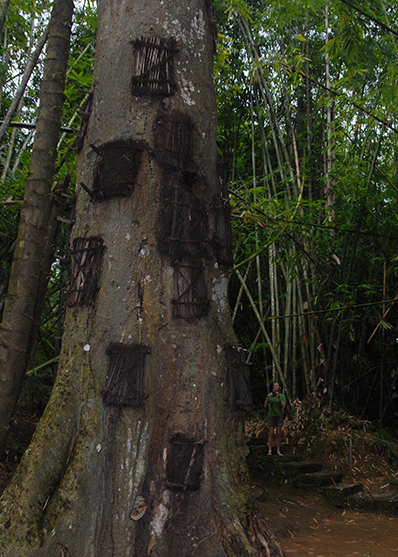
Anyway – that’s enough about death! Let’s move onto the amazing houses and wood carvings which the Torajan people are also well known for. Daud arranged a trek for us into the mountains to stay overnight at a traditional village. The houses, known as tongkanans, are built of wood and have roofs made of split bamboo which curve up at the front and back into dramatic peaks. The outside of the houses are covered in carvings of traditional motifs such as cockerels and buffaloes and are painted in specific colours, namely white, black, orange and red. The houses are oriented north-south with the front facing north and a smaller tongkanan is often built in front which is used for rice storage.
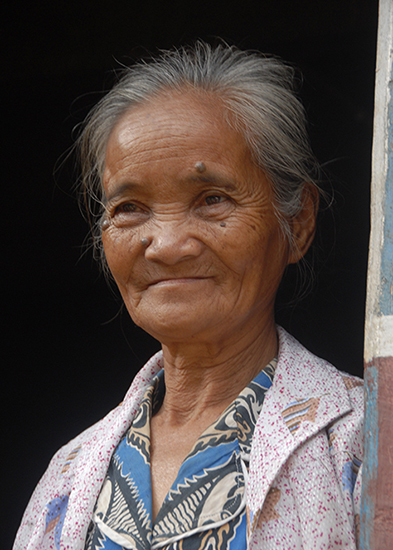
The trek was 12km and was arduous to say the least. I’d say good shoes and a good level of fitness are essential. The single track path climbed up and down through hills and valleys, passing through villages but never crossed another road. We were really in the boonies and then a heavy rain started. We were mighty glad when we finally arrived at the village. We spent the night in the tongkanan of the wife of the village chief (he had died some years earlier) and her hospitality was kind and generously given.
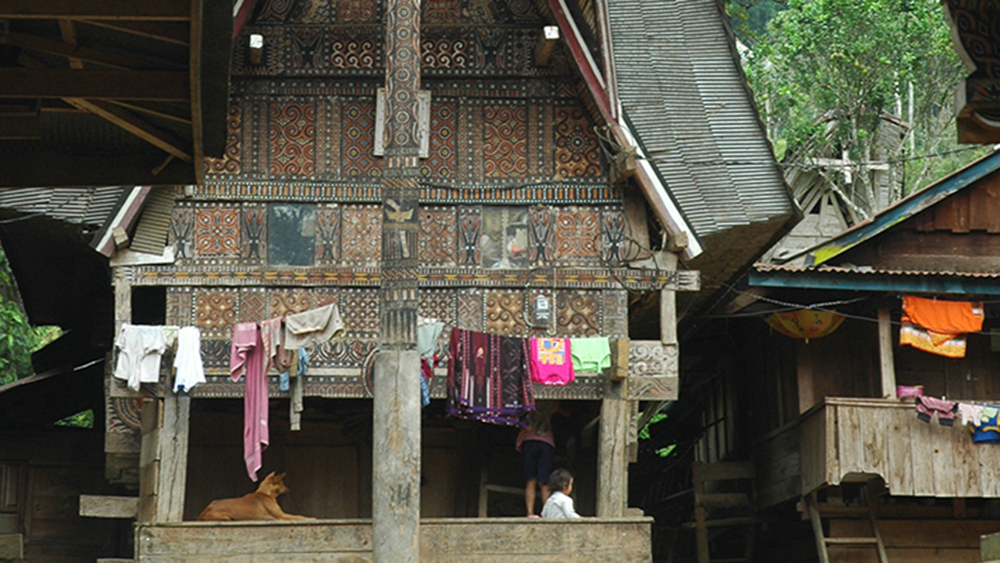
We were somewhat trepidatious about the walk out the next day and it was particularly hard on Stephie and Neil who were already pretty footsore. It took about 2-3 hours, mostly downhill to the road head where we met the car but it was another hour’s walk down a very steep slope to the river bank where we were to board our raft!! Stephie chose the car but Toby, Neil and I struggled down to the river bank.
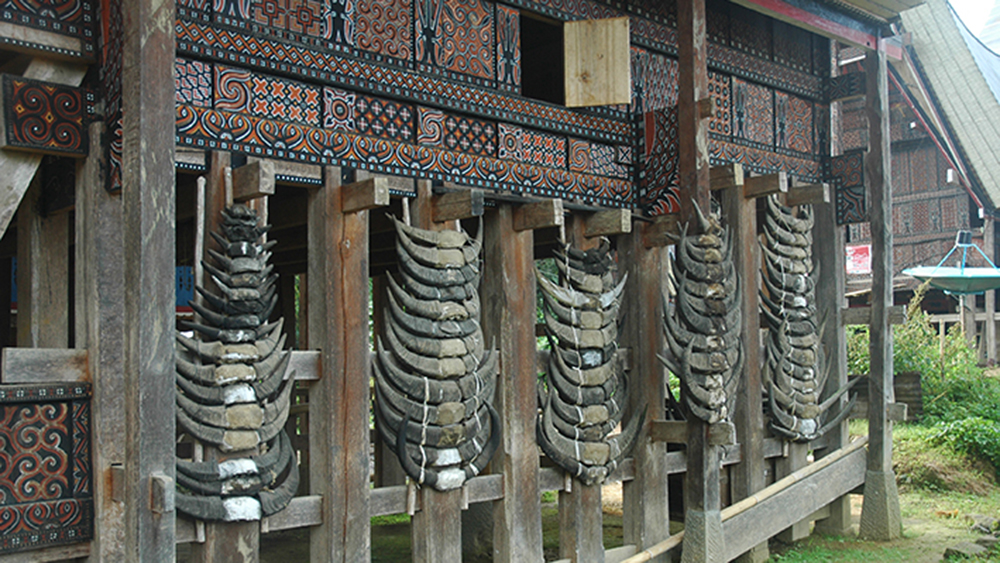
We had an awesome whitewater rafting trip back down to “civilisation”. For the first part of the trip the river cuts through quite a steep sided gorge and the rapids were probably grade 3, potentially higher if there had been more rain in the previous days. Further downstream the river opened out and was less exciting but it was very scenic with dense vegetation down to the water’s edge and waterfalls pouring down the cliffs. We saw many iguanas sunbathing on the rocks and flashes of blue kingfishers hunting on the river. Stephie was at the end to meet us and we had a bumpy ride back to the hotel.
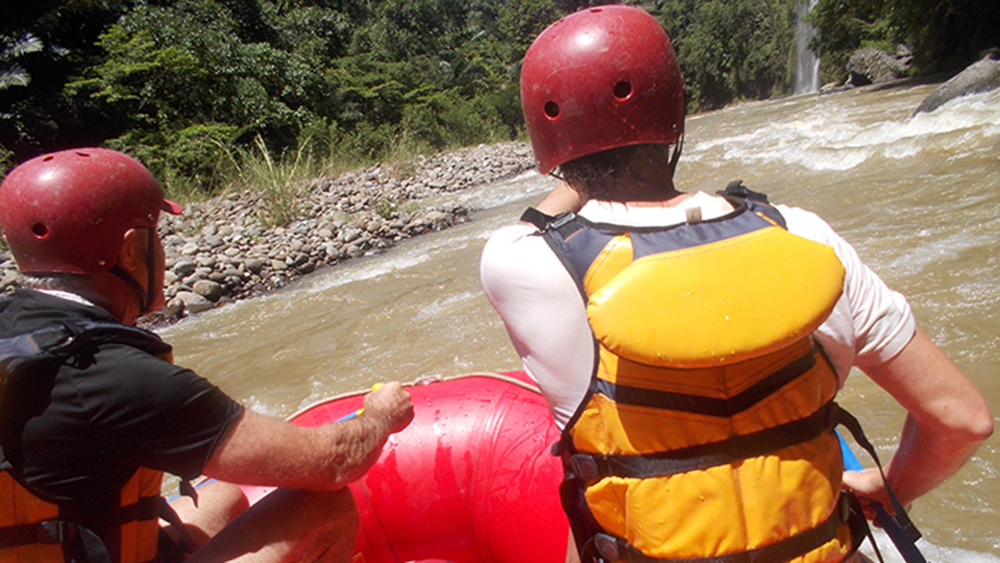
If you’d like to visit Tana Toraja I can strongly recommend Daud as an excellent guide. You can contact him via www.daudtoraja.com
Great trip!
Suzy and Neil
